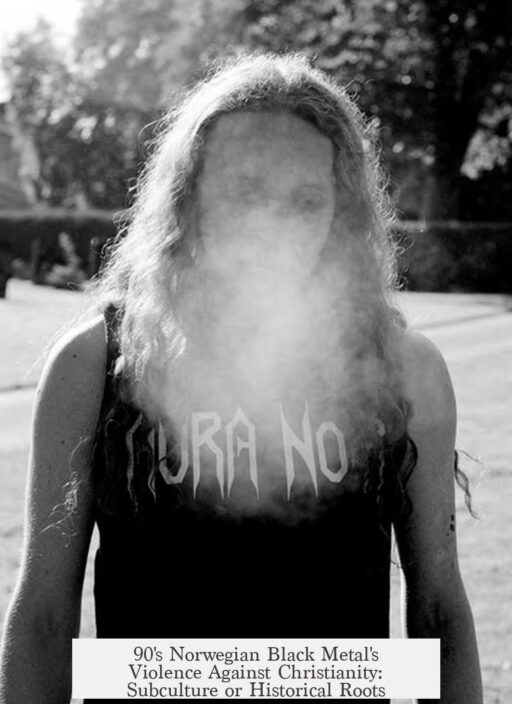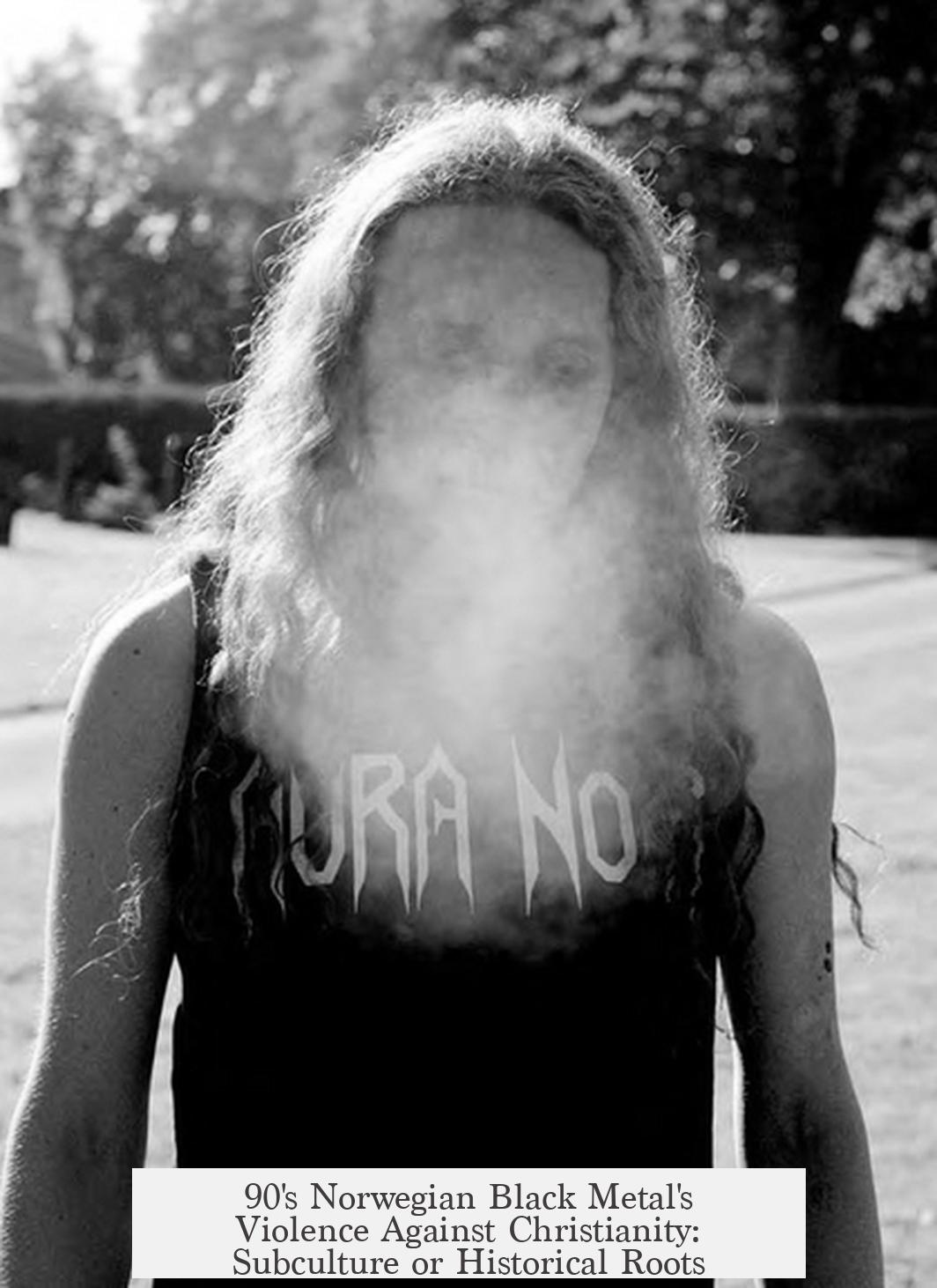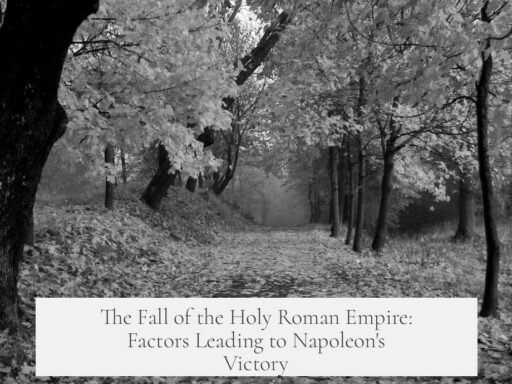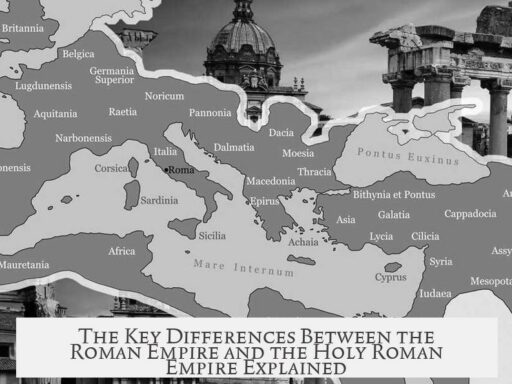The violent antagonism of 90’s Norwegian black metal bands towards Christianity and church burnings originates from a complex mix of political, cultural, and historical influences rather than solely from the metal subculture itself.
At the core, the hostility reflects a politicized cultural nationalism rooted in a revival of Norse paganism. This revival romanticizes Norway’s pre-Christian past as an idealized national identity, opposing Christianity’s historical role in erasing indigenous beliefs. Early Norwegian black metal bands channel this sentiment by rejecting Christian values, aiming to reawaken Norway’s ancient traditions.
Musically and thematically, Norwegian black metal builds upon earlier metal influences like Iron Maiden, Venom, and the Swedish band Bathory. Bathory notably transitioned from satanic imagery towards focusing on heathenism and Norse mythology. This shift inspired Norwegian bands to explore paganism more as cultural symbolism than religious belief.
The anti-Christian violence, particularly church arsons, was spearheaded by radical figures such as Varg Vikernes. Vikernes espoused ultranationalist and anti-Christian views, advocating for Norway’s pagan past and opposing Christianity as a foreign imposition. His actions and ideology polarized the black metal community, with many members condemning the violent acts. Despite heavy media focus, church burnings were a rare minority within the scene.
Norwegian black metal’s use of satanic symbols often served as an accessible form of anti-religious expression rather than true theistic Satanism. Paganism appeared more as cultural reclamation and artistic exploration, emphasizing myth and nature over organized religion. This distinction clarifies that opposition was mostly ideological and symbolic rather than devoutly theological.
The historical backdrop is essential for understanding these events. Norway’s Christianization, often carried out by conquest and political reform, systematically suppressed Norse pagan traditions. Many in the black metal scene view this process as cultural colonization, fueling resentment and cultural resistance. This perspective ties into broader radical traditionalist movements of the time, which seek to undermine what they perceive as Christianized Western values through romanticizing a “heathen” past.
The broader metal and punk scenes worldwide have long expressed anti-Christian themes. Bands such as Black Sabbath and Iron Maiden incorporated satanic and rebellious imagery from the 1970s, while extreme acts occurred internationally in scenes like Brazil’s Sarcofago. Norwegian black metal’s violent episode thus draws from both local cultural grievances and an international tradition of anti-Christian sentiment in heavy music.
Despite media portrayal, church arsons were isolated incidents and did not reflect the majority view in the black metal community. Many artists opposed such violence, focusing more on symbolic art and ideological expression. For example, the Aske EP by Vikernes references these events symbolically rather than promoting widespread destruction.
| Factor | Role in Anti-Christian Violence |
|---|---|
| Political Nationalism | Revival of Norse identity against Christian legacy |
| Paganism | Cultural symbolism and romanticism, not strict belief |
| Black Metal Musical Movement | Inspiration from earlier bands with satanic/pagan imagery |
| Radical Figures (e.g., Vikernes) | Incited violence grounded in extremist ideology |
| Historical Context | Christianization as cultural colonization and suppression |
| International Metal Scene | Precedent for anti-Christian themes and rebellion |
In summary, the violent antagonism towards Christianity in 90’s Norwegian black metal grew from intertwined political, cultural, and historical roots. The metal subculture adopted and developed themes of pagan revival and anti-Christian sentiment influenced by earlier metal traditions and local nationalist reactions to Christianization. Most of these sentiments were symbolic and political rather than purely religious. Violence was driven by a small extremist faction within the scene rather than black metal as a whole.
- Norse paganism revival and nationalism underpinned anti-Christian hostility.
- Black metal drew inspiration from earlier bands but evolved a distinct political-cultural agenda.
- Varg Vikernes exemplified the extremist ideology fueling violent acts.
- Most bands were atheistic or symbolic rather than devout Satanists or pagans.
- Historical Christianization of Norway spurred cultural resentment beyond metal.
- Church burnings were isolated within the scene and often condemned.
- Anti-Christian themes reflect both local and international metal traditions.
Unraveling the Roots of 90’s Norwegian Black Metal’s Violent Antagonism Toward Christianity

Did the shocking anti-Christian violence by 90’s Norwegian black metal bands emerge purely from the metal subculture? Or did it tap into older cultural and political undercurrents? The answer lies somewhere in between, with deep historical, political, and cultural roots fueling this notorious antagonism.
The infamous church burnings, violent acts seen in the wake of bands like Mayhem and Burzum, are often misunderstood as just blasphemous rebellion. But scratching beneath the surface reveals a *complex mix* of radical nationalism, historical grievance, and cultural revivalism.
Politics in Pagan Disguise: More Than Just Metal Mayhem
The attacks on Christian churches were not mere teenage tantrums or random acts of chaos. Instead, they stemmed from a tightly entwined political and cultural ideology that fueled the scene. Fundamentally, it all sprang from a desire to revive Norse paganism and an idealized Norwegian identity. The violent rejection of Christianity symbolized a broader resistance to what was perceived as cultural colonization.
Imagine this: Norway, once rooted in Norse myths and gods, was Christianized centuries ago through conquest and state reforms designed to wipe out local religions. For some black metal musicians, this history wasn’t just trivia — it was an affront to their cultural heritage. Burning churches wasn’t just vandalism; it was an angry symbolic gesture against an imposed religion.
This nationalist and pagan revivalism provided a political edge, with the violence explicitly targeting Christian institutions as symbols of foreign domination and cultural erasure.
Echoes from the Metal Past: Subculture Sparks, But It’s Not the Whole Story
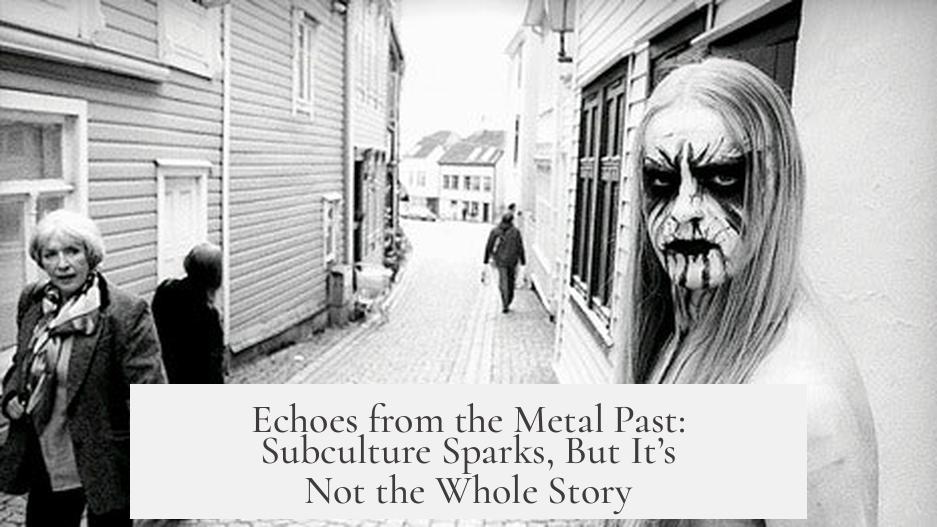
It’s tempting to say this all started within the metal scene, with the bands themselves fueling the antagonism. Indeed, Norwegian black metal drew early inspiration from earlier heavy metal icons like Iron Maiden and Venom, who dabbled in satanic imagery. But the real spark came from the Swedish band Bathory, whose earlier satanic motifs gradually shifted toward a focus on heathenism and Norse mythology.
This transition marked a significant turning point, moving the metal narrative away from pure satanism and into the territory of cultural revival and nationalism. Bathory’s embrace of Norse myths laid a foundation that Norwegian bands built upon, blending musical rebellion with cultural expression.
So, while the metal subculture gave a voice and style to the anger, the antagonism itself had prior ideological roots. Bands often used satanism as a provocative symbol rather than literal religious belief, demonstrating how metal sometimes acts more as a cultural mirror than a creator of ideas.
The ‘Worse Than Evil’ Figure: Varg Vikernes’ Role
No discussion about violent anti-Christianity in Norwegian black metal can skip the notorious Varg Vikernes — a controversial figure who became a real-life villain with his church arson and extremist views. Vikernes advocated ultranationalist, anti-Semitic, anti-communist, and especially anti-Christian ideals, attempting to revive ancient Norse religion by force if needed.
His actions reflected how some factions within the scene morphed from symbolic rebellion into concrete radical extremism. He became something of a Charles Manson figure for black metal — an embodiment of the most extreme impulses that the scene sometimes flirted with but most members rejected.
Interestingly, Vikernes propelled a slow but sure ideological shift away from satanism toward Norse mythology and deep nationalism, influencing the scene’s thematic evolution. His personal cult of personality steered black metal into politically charged, pagan revivalism, blending violence and music into a frightening package.
Paganism vs. Satanism: More Symbol, Less Worship
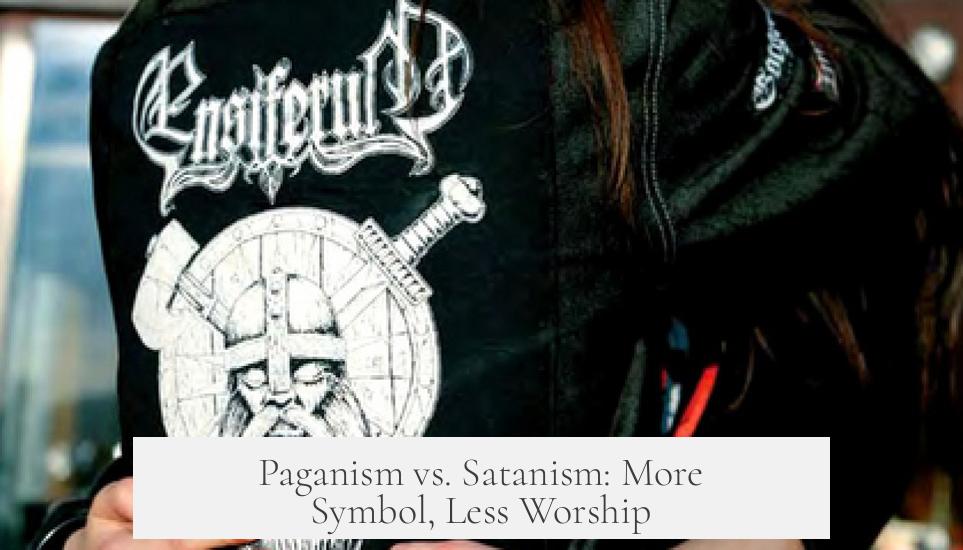
Another twist: far from being truly devil-worshipping satanists, many Norwegian black metal artists were actually atheistic and primarily anti-religious. Satanism was an easy shorthand for rebellion against Christianity, not a deeply held belief system.
Paganism often served more as cultural reclamation and a creative motif rather than strict religious practice. Many bands valued pagan themes for their artistic and historical interest, not explicit worship. Still, some did blend these motifs with nationalist ideology.
So the scene’s anti-Christian stance rested less on devilish faith but more on political symbolism and cultural exploration, using satire, myth, and outrage to question dominant Christian narratives.
Beyond Metal: Wider Historical and Cultural Roots
Here’s where things get even more fascinating. The Norwegian black metal antagonism wasn’t isolated in the music scene. It intersected with broader cultural currents of radical traditionalism and nationalist rebellion in Norway during the late 20th century. This ideology sought to undermine Western Christian values in favor of a romanticized, pre-Christian heathen past.
Think about it: resentment toward the Christianization process chipped away at national identity for centuries. This created fertile ground for movements craving cultural roots untouched by foreign religious authority.
At the same time, similar anti-Christian themes bubbled in international metal and punk circles. Bands like Black Sabbath and Iron Maiden, and even Brazilian extreme metal groups such as Sarcofago, depicted antagonism toward Christianity long before the Norwegian church burnings made headlines.
Understanding these global precedents shows how Norwegian black metal drew upon broader metal and youth subculture traditions. Its violence was an extreme expression of a trend present in worldwide countercultural scenes.
Church Burnings: Fringe Acts, Not a Scene-Wide Pact
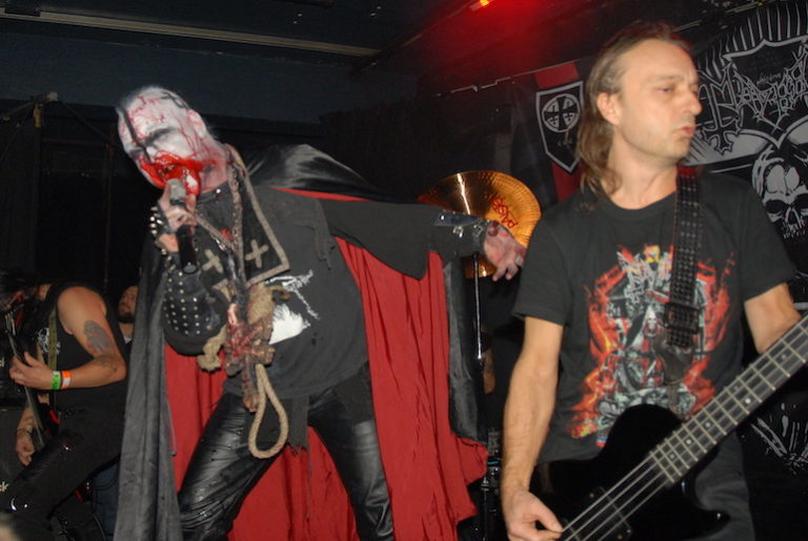
Despite how black metal’s violent acts captured headlines, it’s crucial to remember that church burnings were a minority phenomenon. Estimates attribute only four such arsons directly to the black metal community. Most artists and fans distanced themselves from these crimes. Many within the scene thought Varg Vikernes and his faction went “too far.”
Moreover, church burnings served as symbolic demonstrations rather than literal religious warfare. For example, Varg Vikernes incorporated imagery and references to these actions in his musical releases, such as the Aske EP (1993), but often framed it as provocative art rather than religious zealotry or widespread pagan worship.
This division within Norwegian black metal highlights the complexity of the scene. It wasn’t a united front of violent hatred — it was a contested and diverse cultural movement.
Lessons and Lingering Questions
So, where does this leave us? The violent anti-Christian antagonism in 90’s Norwegian black metal springs partly from within the metal subculture’s rebellious roots, but it also taps deeply into Norway’s historical, political, and cultural soil.
Did this mix make violence inevitable? Probably not. Most black metal musicians and fans never condoned arson or physical violence. Yet, the potent fusion of radical nationalism, pagan revival, and historical grievance created a combustible environment.
Is provocative satanism just shock value? Often yes, but it also served as shorthand to question religious and social norms. Paganism revived not just myths but a sense of lost cultural identity with political implications.
In short, the antagonism toward Christianity was a political and cultural statement disguised as metal rebellion.
So, what can modern fans and historians learn from this tangled past?
- Violence linked to music scenes often has deeper socio-political roots beyond the sound or image.
- Subcultures mix art, history, and ideology, making simplistic labels like “satanic violence” misleading.
- Extreme figures, like Vikernes, can distort or amplify fringe views, but rarely represent entire communities.
- Symbolism (satanism, paganism) often serves more for provocation and identity than literal belief.
Above all, the story of Norwegian black metal’s anti-Christian violence reminds us that beneath every shocking headline lies a complex human tale — a cultural clash, a political struggle wrapped in music’s primal scream.
“The black metal scene’s antagonism was less about devil worship and more about reclaiming lost culture — albeit expressed through flames and fury.”
